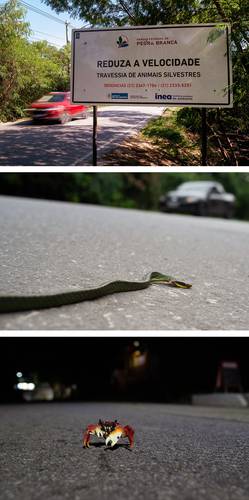In Brazil, a project is utilizing artificial intelligence technology to reduce wildlife collisions on roads. According to the Brazilian Center for Studies in Road Ecology (CBEE), over 475 million vertebrate animals die each year due to collisions with vehicles in the country. Some of the most affected species include the capybara, armadillo, and opossum.
Gabriel Souto Ferrante, a student at the University of Sao Paulo, has been developing a system based on computer vision to detect species and alert drivers of their presence on the road. The project, in collaboration with the Institute of Mathematical and Computer Sciences at USP, aims to protect endangered animals such as the puma, giant anteater, tapir, maned wolf, and jaguarundi.
To implement this technology effectively, support from companies that manage roads is essential. Access to cameras along the routes and safety equipment will enable real-time alerts to drivers and road management companies. Additionally, the technology could improve safety for humans who are also at risk of accidents caused by animal crossings.
In recent years, strategies such as ecological corridors and green bridges have been implemented in Brazil to reduce the impact of habitat fragmentation caused by roads. However, these measures are insufficient given the country’s vast size. Traditional road signs warning of animal presence have limited effect on driver behavior. More extensive efforts are needed to protect wildlife and ensure safe movement for both animals and humans.
The Urubú System, a citizen science social network created by CBEE coordinator Alex Bager, has played a significant role in collecting data on wildlife roadkill in Brazil. This information has helped create public policies and legislation to protect animals. Despite financial challenges, efforts are ongoing to reactivate the platform and address the growing issue of roadkill in the country.
Overall, it is clear that more needs to be done to protect wildlife from collisions with vehicles on roads in Brazil. With support from companies managing roads and continued efforts from researchers and citizens alike, it may be possible to reduce these tragic occurrences and ensure that both animals and humans can safely coexist on our roads.
